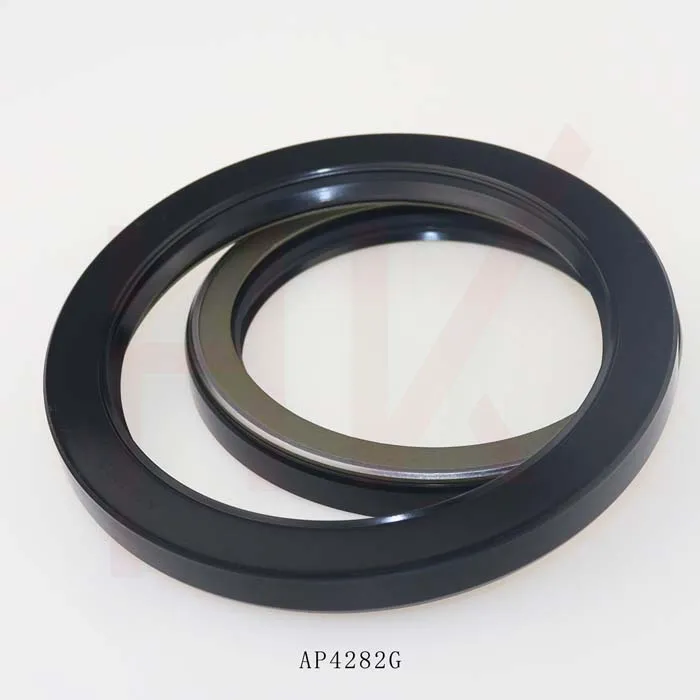Jul . 31, 2024 23:09 Back to list
Understanding the Importance and Functionality of Wiper Seals in Automotive Applications
Understanding Wiper Seals An Essential Component in Mechanical Systems
Wiper seals, although often overlooked, play a crucial role in ensuring the efficiency and longevity of various mechanical systems. These seals are designed to prevent the ingress of foreign particles and the egress of lubricants in applications where motion occurs, such as hydraulic cylinders, pneumatic systems, and other dynamic operations. They serve as the first line of defense against contaminants, which can significantly impact the performance and lifespan of machinery.
Functionality of Wiper Seals
Wiper seals are typically installed at the outer end of a cylinder or shaft. Their primary function is to swipe away dirt, dust, and other debris from the surface of the rod or piston as it extends and retracts. Without wiper seals, contaminants can enter the system, leading to abrasion, increased wear and tear, and ultimately equipment failure. In hydraulic systems, for example, the presence of dirt can cause valves to stick and cylinders to malfunction, leading to costly repairs and downtime.
Wiper seals are designed to seal dynamically while still allowing for relative motion between two surfaces. This dual functionality is achieved through the seal’s unique shape and material properties, which can vary depending on the application requirements. The seal should fit snugly without creating excessive friction, which could hinder the movement of the rod or piston.
Material Choices
When it comes to material selection, wiper seals are typically made from elastomers such as nitrile rubber, polyurethane, or fluoropolymer. Each material offers specific advantages; for instance, polyurethane provides excellent abrasion resistance, while fluoropolymer can withstand extreme temperatures and chemical exposure. The choice of material significantly affects the seal's effectiveness, durability, and suitability for a particular environment.
wiper seal

Moreover, the design of the wiper seal can vary depending on the specific application. Some wiper seals might have additional features, such as integrated dust lips or special profiles designed to enhance fluid retention and dirt exclusion. The proper design and material selection are vital in optimizing performance and ensuring that the seal can withstand the operational conditions it will face.
Importance of Maintenance
Maintaining wiper seals is essential for preserving the integrity of mechanical systems. Regular inspections can help identify signs of wear or damage, allowing for timely replacements before they lead to more significant issues. Operators should look for cracks, tears, or loss of elasticity, which may indicate that the seal has reached the end of its operational life.
Ignoring the condition of wiper seals can lead to increased maintenance costs and downtime due to unexpected failures. In many industries, downtime translates directly to lost revenue, making proactive seal maintenance a critical component of operational efficiency.
Applications of Wiper Seals
Wiper seals are used in various industries, including automotive, aerospace, agriculture, and manufacturing. In vehicles, they protect hydraulic cylinders used in brakes and steering systems. In aerospace, they safeguard critical components that must function reliably in challenging conditions. Agricultural machinery, such as tractors and harvesters, also relies on wiper seals to maintain operational integrity while exposed to dirt and debris.
In conclusion, while wiper seals may not be the most glamorous components in mechanical systems, their importance cannot be overstated. They protect against contamination, reduce maintenance costs, and ensure the reliable operation of machinery. Understanding their essential role can enhance the maintenance and operational strategy for industries that rely heavily on hydraulic and pneumatic systems. As technology continues to advance, the development of more effective wiper seal designs and materials will further optimize performance and durability, ensuring that these unsung heroes of engineering remain a critical focus for engineers and technicians alike.
-
Unlocking the Potential of Hydraulic Systems with Essential Sealing Solutions
NewsAug.06,2025
-
Unleash the Power of Your Hydraulic Systems with Our Premium Seal Kits
NewsAug.06,2025
-
Specialized Hydraulic Seal Kits for Breakers, Pistons, and Presses
NewsAug.06,2025
-
Revitalize Hydraulic Systems with Premium Repair and Seal Kits
NewsAug.06,2025
-
Fortify Your Cylinders with Premium Sealing Solutions
NewsAug.06,2025
-
Elevate Hydraulic System Reliability with Specialized Seal Kits
NewsAug.06,2025
-
TCN Oil Seal Metal Ring Reinforcement for Heavy Machinery
NewsJul.25,2025
Products categories
















